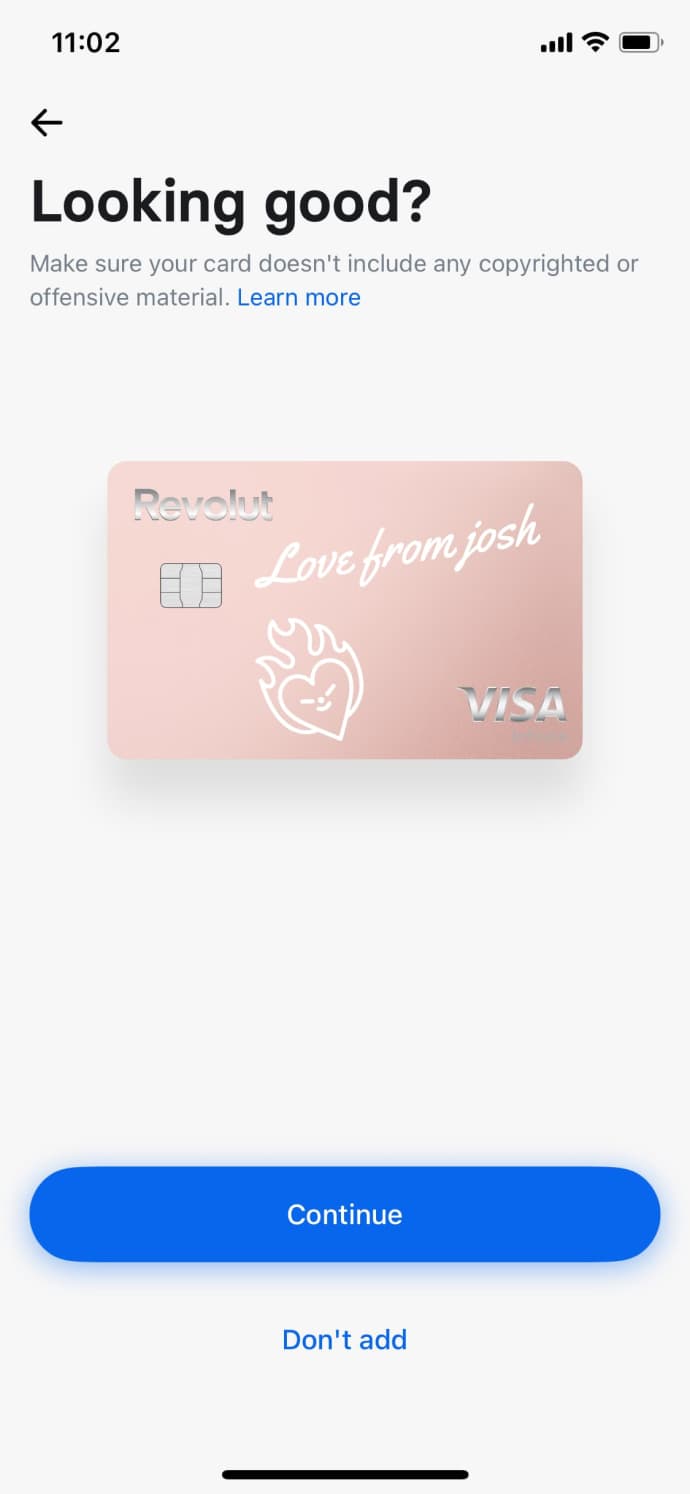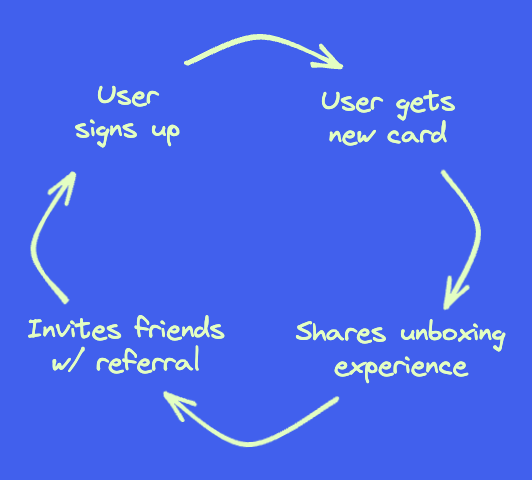
16 Experts share their favorite growth loop examples & advice
Growth loops are all the rage right now, but what exactly are they, and how can you create your own? We asked 16 product and growth experts to share their advice and favorite examples to inspire and learn from. The following article includes growth loop examples from Dropbox, Loom, Meetup, SurveyMonkey, Snyk, Unsplash, Spotify, Revolut, Afterpay, and more.
We’ve broken down the examples into the following categories;
- Referral growth loops
- User-generated content loops
- Company-generated, company-distributed loops
- Hybrid generated-distributed loops
- Dual-loop mechanisms
- Offline growth loops
What is a growth loop?
What exactly do we mean when we talk about growth loops?
Imagine a snowball rolling down a hill; the further it goes, the bigger it gets, picking up more snow on its journey. That's how growth loops help businesses. Every new user or action builds momentum for more growth.
John goes a little further in his definition and explains how growth loops came to be;
My favorite non-software example is parties. Each party attendee who is having a good time will encourage their friends to come. Each new friend that comes, in turn, has a good time and invites their friends. Before you know it, your party can snowball out of control, and the police are called to shut it down.
In the real world, most companies are constrained by their product offering based on the specific category within which they operate. How much wiggle room you have is the most important part to understand.”
This is quite common in the luxury goods industry — Ferrari cars and YSL luggage bags. Luxury brands capitalize on their brand names and logos and display them prominently on their products to evoke prestige and status. This creates a sense of desirability and drives more sales. The reason this loop works well is its ability to effectively transform each customer into a micro-brand influencer and a hyper-targeted, always-on video ad. All at no cost.”
Six types of growth loop every business should consider with real world examples
It’s time to illustrate what growth loops are with some real-life examples. Hopefully, the below will inspire you, too.
Referral growth loops
When I think of growth loops, I think of referrals. A classic compounding growth loop, where a happy customer refers a friend who then becomes a customer. While the referral loop isn’t suitable for all types of business, there are times when this loop can transform the growth trajectory of a company, especially when it’s built into the product;
What made Dropbox's approach exemplary was its deep understanding of user incentives and its seamless integration of the referral process into the user experience.
User-generated content loops
The User Generated Content loop uses the persuasive power of word-of-mouth marketing and social proof to encourage other people to follow in your footsteps;
SurveyMonkey illustrates this concept where users send out surveys to respondents, and completed survey recipients encounter the platform's branding and landing page at the survey's conclusion, compelling them to sign up. This is a powerful compounding loop, as each survey has the potential to reach a substantial number of users.
Ognjen shares an example from Loom that highlights another way of drawing users into a growth loop — when users have to try the product out to use some aspect of it.
They owe all of their growth to a single growth loop. A few years ago, the first user signed up for Loom, recorded a video, and then sent it to a colleague. That colleague received a link, watched the video, and was prompted to sign up for Loom, too.
Chances are high that they did sign up (millions did) because they experienced the value of it first-hand. They didn’t have to be persuaded by an ad or a lame cold email. Instead, they got to see the value of the product first, and on top of that, someone they know sent it to them. A perfect combo of word of mouth and mass distribution of user-generated content. If you wanted to know what being product-led really means, this is it.”
The content part of the growth loop could be content that is hosted on your website (or even is your product), as Gaurav explains,
Here is how it works: users post content on your site; it could be any content — reviews, blogs, questions, answers, videos, etc.
This content generates massive SEO authority, leading to top search rankings. New users discover your platform and then contribute more content, fueling the continuous growth cycle.
Why does it work so well? SEO is essentially a winner-takes-all channel. Over 60% of traffic goes to the top 3 search results. The only way to qualify for a top spot is to house massive amounts of original content on your site. Some companies achieve it by hiring armies of content writers, which can cost millions of dollars per year. User-generated content achieves high search rankings for free.
As Gaurav says, SEO is a powerful channel to own. But it doesn’t happen overnight, and mechanisms must be in place to motivate users. Gary shares more detail about this strategy;
User-generated content, such as uploading a free photo of a laptop with coffee, can be packaged and structured to rank on Google. Another effective strategy is to create a "thank you" button for downloaders to show appreciation to photographers. This validation motivates photographers to upload more photos.
Company-generated, company-distributed loops
Many examples of growth loops rely on the user/customer to create content and distribute it to build momentum, but that’s not the only approach, as Ben shares below;
1. Developers import projects from supported PR-based SCMs, scan their repos, and create fix/upgrade Pull Requests (or auto-created) to remediate discovered vulnerabilities.
2. Developers see the Pull Requests, learn about Snyk, and click a link to bring them to the product.
3. Viewed Pull Requests drive developers to sign up or return to Snyk.
It's neat because it's both an acquisition and an engagement loop, and it differs from most content loops in that it doesn't use Google for distribution.
Hybrid generated-distributed loops
Not everything fits neatly into boxes, just as the below examples don’t fit neatly into set headings. Below are hybrid examples where the company or user takes on different roles to maintain the growth loop.
First up, Aakash shares a fascinating example of creating and using APIs to drive growth, explaining what you need to do to maintain this loop and the advantages it offers;
Building out more APIs leads to a growth model where more and more partners want to build on your infrastructure because of the initial offering and ease of integration. Customers are then more open to using the combined solution. This cycle of increased integrations and adoption eventually forms a growth loop.
To optimize this growth loop, you must create extensive documentation, maintain relationships with your top partners to build trust, and have effective communication with every release. This ensures the APIs can be tested and integrated with minimal risk.
Active community engagement and highlighting successful integration cases further propel adoption. By strategically embedding the API into their ecosystem, B2B SaaS companies not only enhance their platform's capabilities but also fortify their position in the competitive market, creating a self-reinforcing cycle of growth and innovation.
Nino explains the thinking behind a personal favorite of mine, Spotify Wrapped, and how companies can utilize data they already have to create a growth loop;
From a growth practitioner’s perspective, Wrapped is so powerful because it starts as a company-generated content loop but, by its nature, drives virality via user-generated content on social media and word-of-mouth to drive new user acquisition.
From a user perspective, it evokes nostalgia, emotional connection, and anticipation every year, ultimately leading to retention of the core product. Spotify may have a unique combination of personalization, anticipation, emotional connection, and social sharing, but I’d challenge every business to think through what unique data sets and perspectives they have on their users and leverage that to create a growth loop!

Dual-loop mechanisms
Don’t limit yourself to a single growth loop strategy as Gary Yau Chan suggests; “Flywheels are a very powerful mechanism every startup needs to invest in. Not just investing in building one but building out multiple flywheels is crucial for creating a sustainable marketing and growth strategy. Whether it’s a Paid Ad flywheel, SEO flywheel, Referral flywheel, or Community flywheel.”
Ashley provides a great real-life example of a growth loop where two mechanisms work in tandem to drive user acquisition and engagement;
In parallel, the second growth loop focuses on cultivating active members who evolve into community leaders. As new members engage more deeply by attending events and participating in group activities, their commitment increases. The transition from attendee to organizer is pivotal; these enthusiastic individuals take the initiative to create compelling events that captivate their peers.
These well-crafted gatherings not only enhance the experience for existing members but also serve as attractive magnets for new members seeking engaging events. As the new members enter the fold, the loop continues, reinforcing the platform's expansion from a grassroots level.
Offline growth loops
Not all growth loops exist solely online. As the following example shows, a digital bank can drive growth through its offline unboxing experience;
Revolut has created a share-worthy card unboxing experience. The card looks modern, is customizable (users can add drawings, badges, and text to the design), can be metallic, and arrives in a cool box. This drives people to share their experience on social media, giving free coverage to Revolut.

The resulting growth is: User signs up to Revolut → User gets new card → User shares unboxing experience → Invites friend with referral program → User signs up to Revolut.

The principles behind creating a growth loop can be applied to other scenarios, too, like gaining support and engagement for an internal company initiative. Chris explains how these techniques can drive a culture of experimentation within an organization;
With teams covering different surface areas of a product or site, sharing results and insights is the fastest way to take a winning experience and extrapolate it elsewhere. This is easier said than done, as often we find ourselves in silos with sparse communication. But by formalizing this process through quarterly retros or even something as simple as a comprehensive deck of experiments, teams can bridge the gap between knowing what works and what doesn’t.
How to implement a growth loop
Alongside examples, the experts we spoke to provided sage advice on implementing growth loops within your organization. Here are their top tips.
1. Understand your users
Creating growth loops that don’t resonate or motivate your users will fall flat. Dan explains why the key to successful growth loops is understanding your users;
Remember, your growth loop doesn’t have to target all customers. In fact, a narrowing scope strategy can help your growth loop succeed, as Sigal explains,
A good example is looking at the way Afterpay started spinning its growth flywheel.
Even though the company's Buy-Now-Pay-Later service could work with any e-commerce site, the founders initially teamed up with fashion and beauty sites. Before long, users got used to seeing a buy-now-pay-later option on fashion and beauty checkout pages and actively asked for it when this service was unavailable.
Then the loop began again - the service showed up only on fashion sites, forming a consumer habit; users got used to finding this option on fashion web pages and pushed more merchants to join in; as more merchants joined, more users discovered this option and got used to using it, and so on.
The narrowed scope here was not only category-based but also audience-based. By focusing on fashion and beauty, the company's first audience was mainly female-based. As a business owner, it's not easy to decide to cut half of your potential audience out, but it makes it easier to know that focusing on the other half will allow you to engage them faster and more affordably.
2. Build features that encourage interactions
We all want an easy life, so if you want your users to promote and help grow your business, make it as easy as humanly possible for them to do so.
3. Create habit-forming experiences
If you build growth loops to increase engagement, you’ll want to encourage habits. Sree gives you an idea of how to achieve this;
4. Focus on the aspects of growth in the right order
There’s no point in creating a fantastic growth loop if you have a leaky bucket. Instead, you must focus on fixing other areas first;
Every product has a leaky bucket with customer attrition over time. If your retention rate curve goes to zero, you do not have product-market fit and would be wasting money and resources by trying to improve conversion or acquisition to grow.
Once you confirm you have a non-zero retention rate, conversion rate is the next metric you should optimize. That way, when you do invest in acquisition, you will see higher growth and achieve a significantly higher return on your investment. For most products and businesses, the ideal order is to improve retention first, conversion second, and acquisition third.
5. Know when not to use growth loops
Not every business can use every type of growth loop. And annoyingly, there are no hard and fast rules to this. It depends on many factors, from your business model to your category. James provides an excellent case study where growth loops don’t work;
For example, I had an auction house client. Each acquired customer (potential buyer) has the opposite effect on the 'user' experience. Each new customer is another rival bidder who is either going to increase the price for that bidder or win the auction. It's in each user's interest not to refer other customers. Our CAC was sky-high even though the LTV was worth it.
Top tips to create successful growth loops
Growth loops are a low-cost way of driving acquisition and product usage. But it’s important to consider your specific circumstances and users to know where and how to implement a growth loop; options include referrals, UGC, company-generated, company-distributed, hybrid, dual, and offline loops.
If you do plan to implement a growth loop, it’s essential to:
- Understand your users.
- Build features that encourage interactions.
- Create habit-forming experiences.
- Focus on the aspects of growth in the right order.
- Know when not to use growth loops.
Remember, you can experiment with different triggers and mechanisms to see which drives the desired outcomes before a full rollout.
Now that you've learned how to leverage growth loops, deepen your knowledge of PLG with our guide here. Learn how product and marketing teams use experimentation to drive product-led growth.
If you're ready to try it yourself, start your free trial of Kameleoon’s feature management and experimentation solution today and see how a platform like Kameleoon can help you drive PLG with experimentation.
Finally, thank you to the following experts for sharing their knowledge for this article.
Aakash Alurkar
Ashley DeGianelli
Ben Williams
Chris Lei
Dan Dalton
Dan Olsen
Gaurav Agarwal
Gary Yau Chan
John James
Mayank Khera
Maxim Poulsen
Nino Medina
Ognjen Bošković
Sigal Bareket
Sree Das
Ward van Gasteren




















